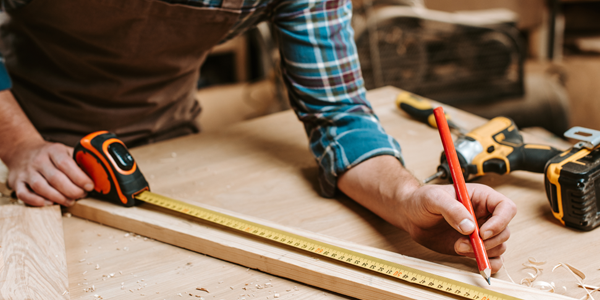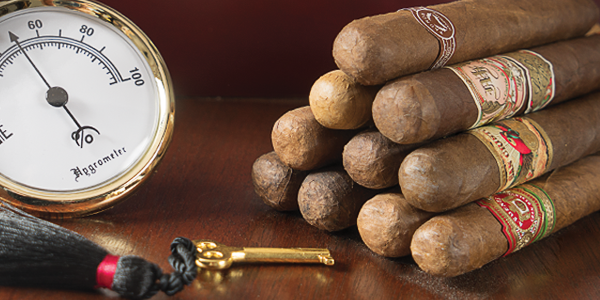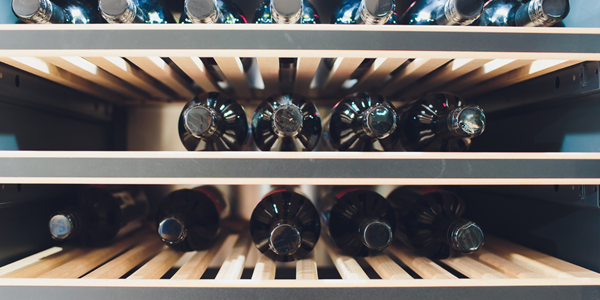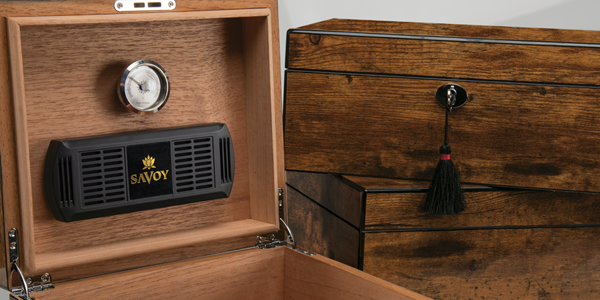How to Build a Walk-In Humidor
Building a walk-in cigar humidor sounds like a daunting and expensive task at first. It doesn’t have to be. It will cost some money but not as much as you think. If you’ve crossed the threshold where you’ve got more cigars than you know what to do with, here’s a basic rundown on how to build a walk-in humidor in your home in an efficient and affordable way.
Do I Need a Walk-In Humidor?
Most aficionados don’t need a walk-in humidor. If you can fit all your cigars in a coolerdor or larger cabinet like a wine fridge, building a walk-in humidor is overkill. The key to keeping cigars fresh is to store them in ideal and consistent conditions: 70% humidity and 70 degrees. Walk-in humidors are worth considering when you’ve got dozens of boxes to keep fresh on a regular basis, otherwise you’re wasting time, effort, and money humidifying an area that’s larger than it needs to be.
The main advantage a walk-in humidor offers is the volume of cigars you can store and the ability to display and organize them with ease. You can leave your cigars in their boxes and spread them out on rows of tidy shelves. You won’t have to root around through ten layers of loose cigars to find the one you want to smoke now.
Convert a Closet
One of the easiest ways to set up a walk-in humidor is to convert a closet. A room that’s closed off from natural light is best. Installing electrical and ventilation may or may not be necessary depending on the layout. It’s essential to have a room you can seal off – like a refrigerator – so that it will maintain a consistent level of humidity inside. It’s best to choose a closet that does not border an exterior wall, and, if it does, make sure to insulate it well to avoid fluctuations in temperature based on the conditions outside.
Materials for a Walk-In Humidor
There are different approaches to consider when building a DIY walk-in humidor. If you’re not comfortable using basic power tools and measuring and cutting boards, it’s best to hire a contractor to build your walk-in humidor.
Because a humidor is always wet, you can’t rely on traditional drywall or flooring materials (like carpeting) to create a walk-in humidor. The type of humidor wood is important. You need materials that react with moisture without encouraging mold. Think of it like you’re building or remodeling a bathroom. Special water-resistant flooring and tiles are necessary. Below is an overview of the main materials you will need. The cost of your walk-in humidor depends on the size of the space you’re humidifying and the materials you choose. Here are the essentials:
- Vapor barrier
- Greenboard drywall
- Spanish cedar (or alternative wood) for walls
- Shelving (vented Spanish cedar shelves are best)
- Flooring (if hardwood, it should be sealed)
- Trim
- Shelf brackets (metal or wood)
- Door
- Screws
- Humidification system (for a room)
- LED lighting
Steps for Building a Walk-In Humidor
Assuming you’re starting with a space that has been stripped down to its framing, here are the basic steps for building out a walk-in humidor.
- Install a vapor barrier over the framing and installation. Cover the walls and ceiling. The vapor barrier prevents moisture from seeping into the structural materials of your home.
- Choose appropriate flooring. If your humidor is in the basement, you can epoxy over a cement floor to seal it. Ceramic tiles are a great option too. You can also go with hardwood flooring, but it must be sealed. Avoid carpeting.
- Install greenboard drywall over the vapor barrier. Because greenboard is mold resistant, it’s an ideal material for a humidified space, in lieu of standard drywall or sheet rock walls.
- Finish walls in Spanish cedar (or alternative wood) over the green board. Spanish cedar is the best material for finishing the interior walls of a humidor. It’s naturally fragrant, reacts positively with moisture, and cigars age well as a result. The decision to use Spanish cedar largely depends on your budget. Spanish cedar is expensive and can easily double the cost of your walk-in humidor, but many cigar lovers prefer cedar and will spend extra for it. If you decide to use an alternative wood for the walls, like pine, it must be coated with a water-resistant sealant.
- Measure and install shelf brackets and shelving. Aficionados who decide on a less expensive alternative to Spanish cedar for their walls will still spend a little more for Spanish cedar shelving. It brings a humidor to life. Vented shelves are best because the humidity can circulate more effectively. Leave room between the shelves to store full boxes of cigars with their lids open.
- Install a door. If you already have a door to the room for your walk-in humidor, consider lining it with a weather strip to close unwanted gaps and keep the humidity in.
- Choose a humidification system based on the cubic feet of your walk-in humidor. The expense will vary depending on your choice. Advanced commercial units with reverse osmosis capability can be tied directly into your plumbing but can cost over $1,000. An adequate humidifier that you set on the floor will run between $300 and $500. Place it in an area where the humidity will be dispersed evenly. Most models include a wall-mounted digital hygrometer for monitoring humidity and temperature.
- Light up with LEDs. Cigars are sensitive to light. If you’ve already got a light fixture in the room, screw in some LED bulbs. They’re energy efficient and won’t fade or dry out your cigars.
How Much Does a Walk-In Humidor Cost?
DIY Cost vs. Hiring a Contractor
A good general estimate for a space that is 6ft wide by 3ft deep by 9ft high is $2,000 if you build it yourself and use an alternative to Spanish cedar, like pine, to finish the walls. If you elect to use Spanish cedar walls, the cost can be double ($4000) or more. This estimate is also based on a commercial humidification unit which can handle up to 1000 cubic feet of space and costs around $450. Although humidification systems with reverse osmosis filters cost more, you can use standard tap water as opposed to buying distilled water to refill the reservoir.
If you hire a professional contractor to do the work, prepare to spend at least $5,000. It’s not uncommon for cigar lovers to spend $10,000 or more on a humidor with high-end materials and any necessary electrical, plumbing, and HVAC upgrades. For the sake of comparison, a top-of-the-line humidor handmade in Paris from the Elie Bleu brand starts around $2,000. They’re stunning in every way but can only hold about 75 cigars.






